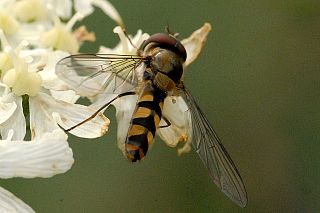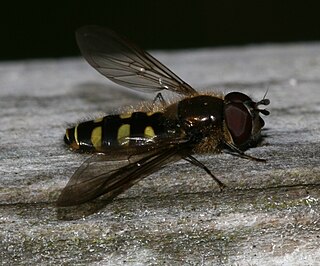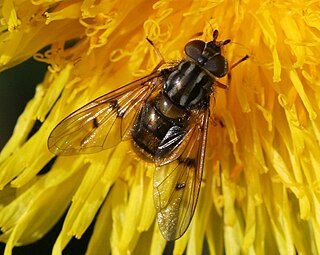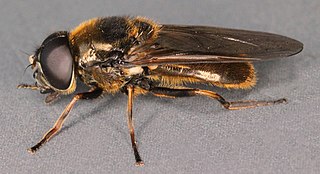
Eupeodes luniger is a common species of hoverfly.

Leucozona lucorum is a Palearctic and Nearctic species of hoverfly.

Meliscaeva auricollis is a West Palearctic species of hoverfly.

Meliscaeva cinctella is a Holarctic species of hoverfly.

Melangyna lasiophthalma is a Holarctic species of hoverfly.

Epistrophe grossulariae is a Holarctic species of hoverfly.

Ferdinandea cuprea is a European species of hoverfly notable for its brassy abdomen. The larvae have been found in sap from trunk damage on oak and ash.

Parasyrphus vittiger is a species of hoverfly, from the family Syrphidae, in the order Diptera.

Anasimyia lineata is a Palaearctic species of hoverfly.

Platycheirus angustatus is a species of hoverfly. It is found in many parts of the Palearctic, and in the Nearctic.
Melangyna arctica is a Holarctic species of hoverfly.

Brachypalpoides lentus is a European species of hoverflies.

Eumerus funeralis or lesser bulb fly is a species of Hoverfly, from the family Syrphidae, in the order Diptera. E. funeralis appears in Peck (1988) as a synonym of E. strigatus (Fallen), but was reinstated as the correct name for tuberculatus Rondani, sensu auctorum by Speight et al. (1998).

Cheilosia antiqua is a European species of hoverfly.
Xylota florum is a Palearctic species of hoverfly.
Cheilosia longula is a Palearctic hoverfly.

Lejogaster tarsata is a Palearctic hoverfly

Mallota cimbiciformis is a Palearctic hoverfly.

Caliprobola speciosa is a Palearctic hoverfly. It is an ancient woodland bioindicator.

Cheilosia fraterna is a Palearctic hoverfly.

















